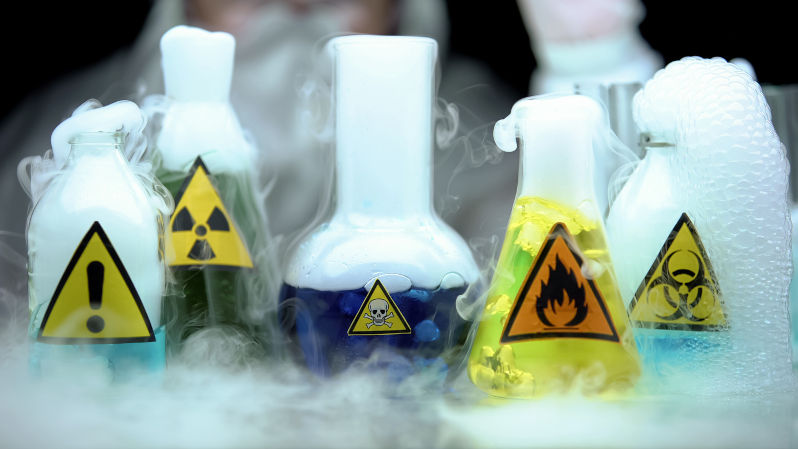The Australia Group at 40
July 25, 2025
By the end of World War 1, more than a million people had become victims of chemical warfare and more than 100,000 of these casualties died shortly after their exposure to CW agents.
Fortunately, the early successes of their conventional war-making and shortages of raw materials persuaded the Germans to de-emphasise gas warfare in World War II.
Nonetheless, after World War II, there were influential voices arguing for the use of chemical and biological weapons in war. One such was the US Army’s chief chemical officer, Major-General William M. Creasey.
Creasey’s carer had been devoted to the study of ways to end life by germ and gas. Appearing before a Congressional committee, he deplored the “humanitarian fervour” that was pointing to the banning of chemical weapons. As quoted in Tristram Coffin’s The Armed Society (New York, 1964), Creasey argued that the types of weapons that he studied were “the most effective and humane way” to wage war.
Fortunately, Creasey ‘s project to accept chemical weapons as legitimate weapons of was never realised on a global scale. Australia played a significant role in the successful international effort to outlaw chemical and biological weapons.
Australia’s involvement was triggered by the Iran-Iraq War of the 1980s. In early 1984, a United Nations investigation team found that Iraq was using chemical weapons in violation of the 1925 Geneva Protocol, the treaty prohibiting the use of chemical and biological weapons in international armed conflicts.
The best-known substances used by the Iraqi Army were organophosphate neurotoxins, known as nerve agents Tabun, Sarin, and the blister agent, mustard gas. In a declassified 1991 report, the CIA estimated that Iran suffered more than 50,000 casualties from Iraq’s use of several chemical weapons.
The news of the use of chemical weapons in 1984 prompted Australia, which would serve as a temporary member of the UN Security Council in 1985-86, to act. In 1985, the Australian Government convened a meeting in Brussels of like-minded countries to identify exports that needed to be controlled so as not to contribute to the spread of chemical and biological weapons.
Until that time, the controls suffered from a lack of uniformity and could easily be circumvented. Australia championed an international group to harmonise assessments of which chemical precursors should be subject to export control. The group became known as the “Australia Group”. Its membership has expanded from 15 in 1984 to 42 plus the European Union as it marks its 40th anniversary in 2025.
One of the most significant Australians to advance the cause of chemical and biological disarmament was Bob Mathews, who had begun a career in the Australian Defence Science and Technology Organisation in 1968, the year in which the Nuclear Non-Proliferation Treaty was opened for signature. Between 1968 and 1978, one of Mathews’ duties was to analyse the role of a range of CW agents and their precursors.
In 1985, Matthews developed the original Australia Group export control list for CW precursor chemicals and, a few years later, another list for chemical manufacturing equipment. These documents in time became internationally accepted norms for responsible export control policy around chemical non-proliferation. All members of the Australia Group were expected to deny export licence requests for items on the control lists when there was concern that the items might be used in a chemical or biological warfare program.
The early work of the Australia Group fed into Australia’s remarkable achievement in promoting a Chemical Weapons Convention. Work on the convention had become stuck on technical issues in the 1980s. One of these technical problems was how to separate weapons-relevant chemicals from those in legitimate industrial use. Another was the problem of devising workable verification and enforcement regimes.
In 1989, to break the impasse, Australia’s minister for foreign affairs, Gareth Evans, chaired a government industry conference against chemical Weapons that was attended by representatives of 66 countries and all the world’s leading industries. Evans then assembled a small team of officials in Geneva including Martine Letts, Chris Moraitis, Tim McCormack, an international law adviser, and Mathews as scientific adviser.
The team worked energetically on the text of the convention with Mathews drafting the crucial scientific, technical and verification annexes: schedules of chemicals, provisions to enable their revision and verification protocols. Another of Mathews’ successes was to expand the scope of the CWC industry verification regime.
The Chemical Weapons Convention (CWC) entered into force on 29 April 1997 and is one of the most successful pieces of international law, certainly in terms of geographical scope. Only four UN-recognised states have not ratified the treaty. It prohibits the use of chemical weapons and the large-scale development, production and stockpiling or transfer of chemical weapons or their precursors.
All participants of the Australia Group are members of both the CWC and the 1972 Biological Weapons Convention. As with all its decisions, the Australia Group accepts new members only by consensus. Those countries that wish to join the group have to meet certain criteria including proven compliance with the CWC and BWC, and an established, effective national export control and enforcement mechanism for all the items on the group’s export control lists.
The success of the Australia Group over 40 years can be measured by considering the alternative of a world without the group and the CWC. In a conflict as bitter as the current Russo-Ukraine war, both the CWC, to which Russia is a party, and the work of the Australia Group, acts as a constraint on belligerents resorting to chemical or biological weapons in wartime.
The views expressed in this article may or may not reflect those of Pearls and Irritations.
